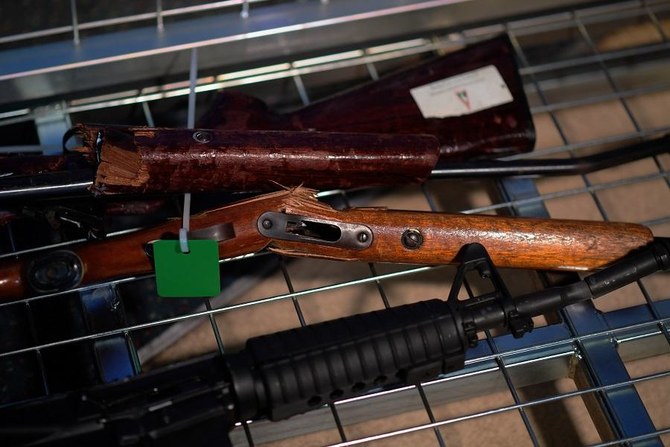New Zealand's first gun buyback event a success, police say
 MELBOURNE July 13. 2019 - Police on Saturday labeled New Zealand’s first firearms buy-back event a success, after 169 individuals handed in 224 prohibited firearms in the city of Christchurch.
MELBOURNE July 13. 2019 - Police on Saturday labeled New Zealand’s first firearms buy-back event a success, after 169 individuals handed in 224 prohibited firearms in the city of Christchurch.
It comes four months after the country’s worst peacetime mass shooting, which killed 51 people and injured dozens in attacks on two mosques in the city.
The event was the first of 258 planned until the end of the year, to compensate owners of powerful, but newly banned, semi-automatic weapons following the attacks.
The attitude of firearm owners who participated was “outstanding,” police official Mike Johnson said in a statement. “They have really engaged in the process here today and we have had positive feedback,” he added.
One gun owner, who sought anonymity, told the New Zealand Herald newspaper he was happy with the NZ$13,000 ($8,697) he received for his semi-automatic hunting firearm, despite initial doubts.
“I didn’t think this would be a fair process at all - I wasn’t particularly happy about it. But the outcome was good and they handled it well,” the paper quoted him as saying.
Police said gun owners were compensated with a total of NZ$433,682 ($290,133) on Saturday. The government has set aside NZ$208 million ($139.15 million) for the scheme.
Parliament passed the gun reform law - the first substantial changes to New Zealand’s gun laws in decades - by a vote of 119 to 1 in April.
The new laws bar the circulation and use of most semi-automatic firearms, parts that convert firearms into semi-automatics, magazines over a certain capacity and some shotguns.
With a population of just under 5 million and an estimated total of 1.5 million firearms, New Zealand ranks 17th in the world in terms of civilian firearm ownership, the Small Arms Survey shows.
Gun megastore plan in New Zealand's Christchurch sparks backlash: media

New Zealand retailer Gun City, which sold weapons to the man accused of shootings at two Christchurch mosques that killed 51 people and injured dozens, has aroused concern with plans for a mega store in the South Island city, media said on Wednesday.
Radio New Zealand said some of those living near the proposed site were upset at the prospect of the store, sprawling over 300 sq m (3,229 sq ft), along with warehouse, office and carpark, set to open in August.
The location is just 1 km (0.62 miles) from the racetrack where New Zealand held its first firearms buyback on Saturday, four months after its worst peacetime mass shooting.
The accused gunman, Brenton Tarrant, bought four weapons and ammunition between December 2017 and March 2018, Gun City owner David Tipple said in March.
Tarrant, due to stand trial in May, has pleaded not guilty to 92 charges over the attacks, including New Zealand’s first terrorism charge.
Tipple told Radio New Zealand he was sorry some people were concerned about the new store, but the chain was “willing and happy to introduce those persons to the positives of firearms”.
A gun reform law passed in April bars the circulation and use of most semi-automatic firearms, parts to convert firearms into semi-automatics, magazines over a certain capacity and some shotguns.
Gas explosion in New Zealand's Christchurch injures several people

New Zealand emergency services evacuated residents near what they said was a suspected gas explosion in the South Island city of Christchurch on Friday that left a house on fire and several people injured.
There was no indication that Friday’s blast had any wider security implications.
“Fire and Emergency New Zealand was called to a house on fire ... at about 10.15 a.m. after reports of a large gas explosion,” a spokeswoman for New Zealand’s fire service said.
Four fire engines, a specialist command unit and a fire investigator were at the scene, she said.
Police said in a statement initial reports suggested a number of people had been injured in the incident in the residential suburb of Northwood. Media reports said six people had been taken to hospital.
A house was on fire and police had closed roads and were carrying out evacuations following what they described as a “serious incident”.
A Christchurch hotel worker, who was not identified, told the New Zealand Herald newspaper that a sound like an explosion had shaken nearby buildings. “It was more than an earthquake, you’d think a bomb had gone off,” the newspaper quoted the worker as saying.
Police did not identify the cause of the incident. A Fire and Emergency Services spokeswoman said a fire investigator was at the scene but did not yet have any official information about the cause.





